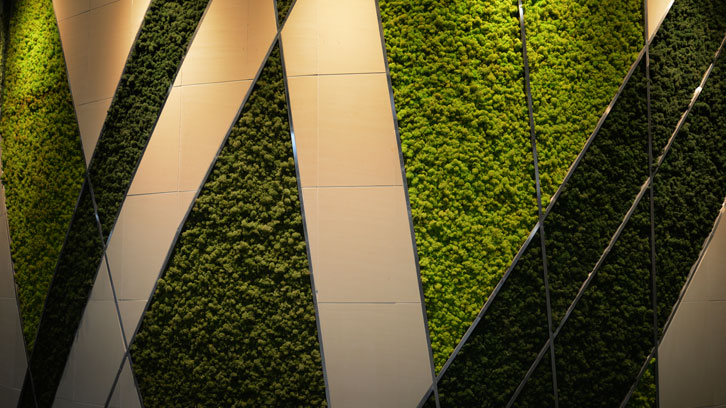The Use of Cementitious Materials as Biological Substrate

Author: iStockphoto/painter72.
Incorporation of photosynthetic organisms on the structure envelope, traditionally as vertical gardens, has gained attention and has become a priority in the area of architecture and construction. The above is not only consequence of aesthetics but also consequence of environmental and economic benefits. There are several typologies ranging from plant boxes to systems more complex such as hydroponic ones and they have several benefits including local absorptions of CO2, thermal improvement of buildings, purification of the local air and others.
Nonetheless, recent research of the Polytechnic University of Catalonia (UPC) is centred in the development of cementitious materials with an enhanced bioreceptivity to stimulate biological growth. The term bioreceptivity refers to the physical and chemical properties of a material involved in the promotion of the colonisation, development and reproduction of living organisms. This propitiates more sustainable constructions and with a higher level of integration in the natural environment, imitating what naturally happens on rocks in natural and rural areas.
Natural colonisation of living organisms under environmental conditions is very time-consuming since the current materials have properties, which hinder this process. Moreover, common tests carried out in this research topic are based on accelerated laboratory tests. However, those tests have limitations by not considering weather conditions as well as environmental biodiversity.
|
|
|
| Figure 1: Exposure of experimental samples in the area of Montseny. | |
Results obtained show significant differences in the biodiversity and quantification of fungi and bacteria, which are the common pioneer microorganisms of the colonisation process of cementitious materials, for the three locations. The study aimed to be a first approach of the joint analysis of the biological and natural colonisation, and the weather conditions and air quality. The research demonstrates biological growth is heavily dependent of the environmental conditions (weather conditions and air quality), which justifies the fact that laboratory and field-scale tests presented different results. Moreover, it is necessary to carry out longer experimental programs for natural colonisation analysis.
Sandra Manso
Department of Animal Medicine and Surgery
References
Manso, S.; Calvo-Torras, M. Á.; De Belie, N.; Segura, I.; Aguado, A. Evaluation of natural colonisation of cementitious materials: effect of bioreceptivity and environmental conditions. Science of the Total Environment. 2015, vol. 512-513, p. 444-453. doi: 10.1016/j.scitotenv.2015.01.086.


